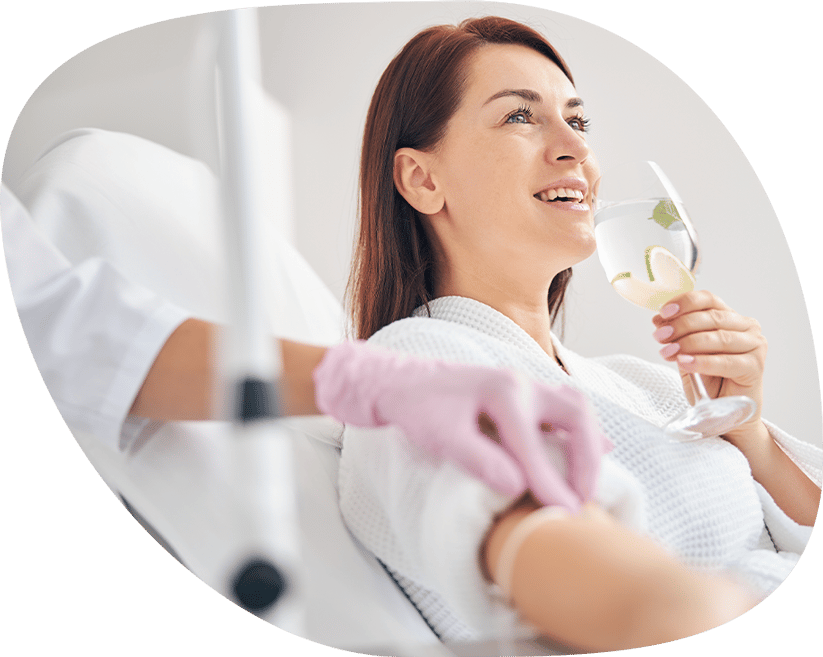Sometimes, making sure your body gets the nutrients it needs to be happy and healthy seems like a full-time job. After all, our bodies are highly complex, dynamic machines. Like most machines and tools, our bodies need plenty of high-quality, potent fuel to operate optimally. Unfortunately, everyday life makes it difficult to get the vitamins, nutrients, amino acids, and antioxidants our bodies need to function correctly.
The truth is most of us live busy lives. That's especially true for busy professionals and working parents who can't take the time to source organic ingredients and nutrient-dense foods. Preparing a delicious dish with lean protein and fresh, yummy veggies sounds great. But do you really have the time to buy, clean, prep, and cook a full meal with all those responsibilities on your plate? A quick trip to the cheeseburger joint is so much easier, especially when you have picky eaters for kids. If you're a parent, you know convincing a child to choose Swiss chard over chicken nuggets is harder than solving a Rubik's cube.
Thankfully, there are much simpler ways to treat your body right with vitamins and nutrients, even if you're constantly on the go. IV vitamin therapy in cityname, state is a new, revolutionary treatment from Juventee that delivers essential nutrients directly into your bloodstream. That way, you can give your body the refined fuel it needs without choking down pills or balancing supplements.
Unlike pills and food, vitamin injections bypass the liver's metabolism, where nutrients are often broken down. When nutrients are processed by your liver, it can decrease the amount your body absorbs. By injecting vitamins directly into the bloodstream, you can be sure that 100% of nutrients are absorbed by your body. Vitamin IV therapy may boost your overall brain and body health in a number of different ways:
- Enhanced Clarity and Focus
- Better Sleep
- Increased Stamina for Exercising
- Enhanced Hydration
- Better Mood
- Expedites Recovery from Nagging Injuries and Strains
Plus, with our NAD+ therapy, patients can improve more of their body's functionality and even prevent muscle deterioration. It might sound like science fiction, but Juventee's IV Vitamin Therapy is as real and effective as it gets. You're probably thinking to yourself, "That's all well and good, but what's in IV drip therapy? Don't worry; we've got you covered.
Our Vitamin Therapy Services
Service Areas
What Ingredients Are in IV Vitamin Therapy in Rochelle Park, NJ?
IV vitamin therapy is a wonderful choice if you want softer, healthier skin, a better immune system, and even a cure for that early-morning hangover from a weekend out. But if you're like most new patients, you're probably wondering what's actually in this type of IV therapy.
The contents are right there in the name, boosted with some extras to make you look and feel great. Some of the most common ingredients include vitamin C, a wide range of B vitamins, minerals, antioxidants, and amino acids. Let's take a closer look at what these typical ingredients are and why they're included in most vitamin IV therapy sessions:

If you're like most adults, your parents probably loaded you up with vitamin C whenever you had the sniffles or a cold. Your younger self might not have believed it worked, but as it turns out, your parents were onto something. According to doctors, vitamin C is one of the most important vitamins to consume. It might not be the cure-all for the common cold, but it absolutely helps maintain your immune system so you can fight the cold quicker. Also known as ascorbic acid, vitamin C also protects your body from prenatal health issues, cardiovascular problems, eye diseases, and even wrinkly skin.
When your body lacks vitamin C for a long time, you're sure to notice. Though vitamin C deficiency is relatively rare in the U.S., adults who go long periods without it may get sick frequently and suffer from other immune system issues. In extreme cases, people may get scurvy, which causes a litany of issues like joint pain, bleeding gums, and depression.
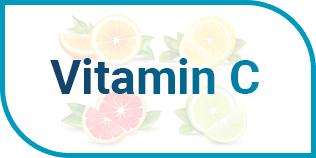
B vitamins like riboflavin (B2), niacin (B3), folic acid (b9), and cobalamin (B12) play a crucial role in keeping you healthy and maintaining your overall wellbeing. If you want a healthier body, B vitamins are critical, as they are literally building blocks that help preserve your brain functionality, cell metabolism, and energy. For pregnant women, B vitamins in IV drips are especially important because they help your new baby's brain develop while in the womb. B vitamins have also been shown to prevent congenital disabilities. Plus, they help ease feelings of nausea, which is a big bonus for moms and dads alike.
When your body is vitamin B deficient, you're putting yourself at risk of many health problems, such as complications with pregnancy, nervous system disorders, amenia, and gastric cancers.

Like the other vitamins and nutrients on this page, magnesium plays an important part in your body's total health. As a cofactor or helper molecule, magnesium has a role in 600+ bodily functions, including protein formation, nerve function, gene function, muscle movement, and energy production. If you're having a stressful day or week, high-potency magnesium has been shown to have relaxation properties that help calm your nerves and muscles. Unfortunately, most Americans don't get enough magnesium in their diets.
When your body is magnesium deficient, you could be playing with fire. Magnesium deficiency has been linked to chronic health concerns like osteoporosis, diabetes, and even heart disease. If you're feeling unusually weak or suffering from irregular muscle cramps, a vitamin IV session from Juventee could be the solution you need.
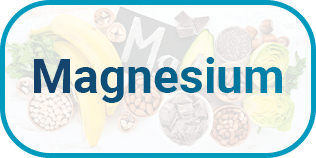
Just about every health food and drink in the stores boasts high levels of antioxidants. That's great, but what are they? Antioxidants are substances shown to slow or prevent cell damage from free radicals. Free radicals are unstable molecules linked to inflammation, disease, and forms of cancer. According to the National Library of Medicine, antioxidants also act as hydrogen and electron donors, as well as enzyme inhibitors.
Most humans get some types of antioxidants naturally through eating and drinking. However, IV vitamin therapy is a much more effective way to fight back against free radicals with antioxidants. When your body lacks antioxidants, free radical production increases, which causes oxidative stress - a harmful situation linked to arthritis, cancers, strokes, and Parkinson's disease.
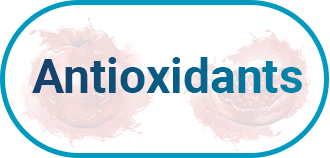
Thankfully, Juventee's IV vitamin therapy in Rochelle Park, NJ contains antioxidants that may scavenge and reduce the free radicals affecting your health.
Some additional vitamins and nutrients found in most IV vitamin therapies include:
- Calcium
- Amino Acids
- Threonine
- Arginine
- Tryptophan
- Vitamin E
- Vitamin D
- More
What Can I Expect from an IV Vitamin Therapy Session?
All IV vitamin injections are applied here at the Juventee office, where our patients are comfortable and at ease. IV vitamin therapy sessions vary in length, depending on the IV therapy you choose and how many applications you need. Vitamin IV injections are administered quickly, with the patient feeling a small pinch from the needle at the injection site.
Patients should not experience any irritation or adverse effects. Once therapy is over, they may leave and go about their day feeling fantastic. While most patients leave our office feeling great, everyone's experiences are different.
What you feel after IV therapy depends on the vitamins you choose and your unique body composition. Most often, however, patients enjoy IV vitamin benefits instantly since their bodies absorb all of the nutrients provided. For optimal results, we recommend you schedule several vitamin IV therapy sessions to thoroughly care for and cleanse your body.
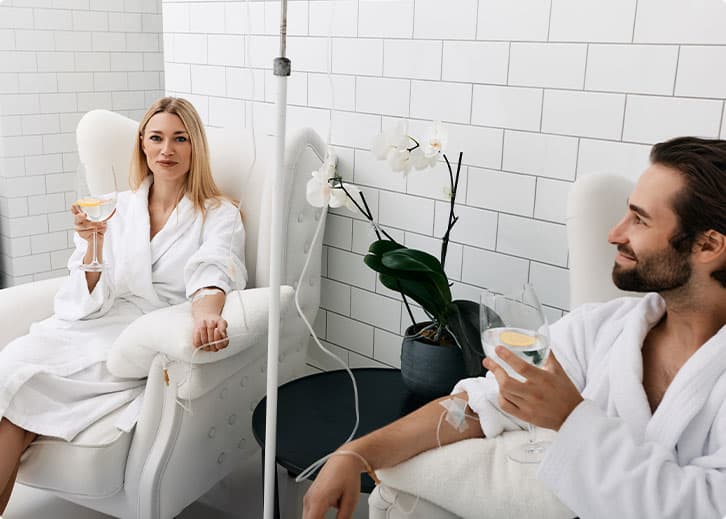
Are There Other Uses for Juventee's Vitamin IV Therapy?
In the past, IV vitamin therapy in Rochelle Park, NJ was reserved for sick hospital patients and the ultra-wealthy. Today, millions of health-conscious Americans use IV vitamin drips to give their bodies full-potency vitamins, antioxidants, minerals, and amino acids. Taking supplements is great, especially if you're not treating your body to a healthy diet. In reality, though, supplements and multivitamins only give you a fraction of the benefit.
Juventee's IV vitamin infusions, on the other hand, are applied directly into your bloodstream. That way, all those wonderful vitamins and nutrients bypass your digestive system, giving your body much-needed care in the blink of an eye.
Getting nutrients in an instant is a benefit on its own, but what other advantages does IV vitamin therapy provide patients? Are there other uses for a vitamin IV drip other than getting your daily vitamins? Let's take a look and see.

IV Vitamin Therapy May Help with Your Weight Loss Goals
If you're like most Americans in modern times, you could afford to lose a few pounds. Weight loss is a big topic these days - being overweight puts you at risk for a long list of ailments and diseases, so it makes sense to shed pounds. Of course, that's much easier said than done.
One savvy way health-conscious people use vitamin IV drips is to help kick start their weight loss goals. Juventee's unique vitamin formula contains metabolic boosters that help convert fat into energy, giving you the "go" needed to finish that workout. By jumpstarting your metabolism, your body can break down fat more effectively, helping you maintain a healthy weight.

IV Vitamin Therapy May Help with Nutrient Deficiencies
In hospital and medical settings, IV nutrient drips can help patients who are too sick to eat. Outside of those settings, it can also be a great way to address certain nutrient deficiencies caused by conditions like:
- Colon Cancer
- Celiac Disease
- Crohn's Disease
- Cystic Fibrosis
- Short Bowel Syndrome
Generally, people with the conditions above have a hard time getting the nutrients their bodies need via supplements and diet. Because IV vitamin therapy in Rochelle Park, NJ bypasses their digestive system, these patients can get nutrients that they otherwise wouldn't get.

IV Vitamin Drips May Boost Energy
Are you sick and tired of relying on teeth-staining coffees and chemical-ridden energy drinks to stay awake and focused? Nutrients like amino acids and B vitamins, found in IV vitamin therapies, give you a natural boost of energy, lessening your need for sugar and caffeine.

IV Vitamin Therapy May Cleanse Free Radicals & Toxins
In addition to helping with weight loss and giving you essential nutrients, vitamin IV therapies may also cleanse your body of damaging toxins and free radicals. Free radicals, in particular, can damage your DNA and speed up the aging process.
The antioxidants in Juventee's IV vitamin therapy help protect your body and its immune system by neutralizing free radicals and eliminating toxins. Some common antioxidants used include:
- Vitamin C
- Alpha-Lipoic Acid
- Glutathione

Vitamin IV Therapy May Reduce Anxiety
Ingredients in IV vitamin drips like magnesium sulfate are great for lowering blood pressure and calming nerves. But magnesium has also been shown to:
- Relax Your Muscles
- Calm Feelings of Anxiety
- Help You Sleep
- Support Your Immune System
- Prevent and Deal with Migraine Headaches
Magnesium sulfate is also a common ingredient in stress-reducing products like Epsom salts as well.

IV Vitamin Therapy in Rochelle Park, NJ May Help Cure Hangovers
We've all been there before - it's Friday afternoon, and you and your work colleagues decide to leave the office early. One of your co-workers suggests you go to a bar to let off some steam and reflect on the work week. One or two drinks, you promise yourself. The next thing you know, you're three sheets to the wind, singing bad karaoke and making new friends with everyone at the bar.
You had a great time, but now it's Saturday morning, and it feels like a cinderblock was dropped on your head. Instead of grabbing a can of salty V8, why not treat yourself to vitamin IV therapy from Juventee? The hydration provided by our IV vitamin drips helps fight back against hangover symptoms like:
- Headaches
- Muscle Aches
- Nausea
- Sour Stomach
- Dehydration
- Brain Fog
- Fatigue
Fluids from vitamin IVs get to work quick, replenishing the water you lost while you were out partying. Vitamin IVs also have much-needed electrolytes for your body, which may relieve feelings of dizziness, fatigue, and thirst.
Treat Your Body Right with IV Vitamin Therapy from Juventee
If your goal is to nourish your body with nutrients and vitamins, Juventee's IV vitamin therapy in cityname, state is the key you need to unlock success. We believe that balance is key to your health and wellness, which is why our specialists employ the most innovative medical advances in our treatment options and products. Unlike other vitamin IV clinics, our focus is on providing you with a full range of health services to help you reach your full potential.
That way, you can satisfy your aesthetic, physical, and nutritional needs while positively impacting your emotional wellbeing too. If you're on the fence about getting healthy and re-discovering the joys of youth, contact our office today. It would be our pleasure to talk about your concerns and how our preventative, proactive treatments like IV vitamin therapy can help on your journey to health.

Call For Service
 (201) 292-1590
(201) 292-1590
Latest News in Rochelle Park, NJ
What weed paid for: What are NJ towns doing with marijuana taxes?
Mike Davishttps://www.app.com/story/news/local/new-jersey/marijuana/2023/07/24/nj-legal-weed-heres-what-towns-are-using-marijuana-taxes-for/70430210007/
LAWRENCE — It seemed too good to be true.Lawrence Township Manager Kevin Nerwinski didn't believe the numbers he was seeing. Verano Holdings wanted approval to open up its Zen Leaf medical marijuana dispensary in the town to recreational customers, selling legal weed to anyone over 21 years old. The company expected millions in revenue per month and, with a 2% transfer tax on every sale, a huge windfall for the township.In the first year or two, Verano told Nerwinski that the township could see as much as $...
LAWRENCE — It seemed too good to be true.
Lawrence Township Manager Kevin Nerwinski didn't believe the numbers he was seeing. Verano Holdings wanted approval to open up its Zen Leaf medical marijuana dispensary in the town to recreational customers, selling legal weed to anyone over 21 years old. The company expected millions in revenue per month and, with a 2% transfer tax on every sale, a huge windfall for the township.
In the first year or two, Verano told Nerwinski that the township could see as much as $1 million in tax revenue.
"The numbers seemed eye-popping," Nerwinski said. "And then, on Day One, there were lines around the building. And it continued for weeks and weeks and weeks."
As the New Jersey cannabis industry enters its second year of recreational marijuana sales, municipalities are beginning to reap the tax benefits promised to officials when they signed up to become first in line. While the revenues are not budget saviors for any and likely will decrease with time and competition, town officials say it’s driving real impact.
More:What we've learned, one year after NJ legal weed sales began
More than $4.6 million was collected in cannabis tax revenue in 10 of the 12 municipalities where adult-use sales began in April 2022, according to a USA TODAY NETWORK analysis of municipal budgets and interviews with municipal officials. The impact in those municipalities is varied, often depending on the size of the municipality: In small towns, cannabis tax revenue can pay for new firefighters. In bigger cities, it's simply a way of keeping costs down.
Complete tax figures were not available in three municipalities — Deptford, Egg Harbor and Paterson, where cannabis tax revenue wasn’t listed as a budget line item and municipal officials did not return multiple requests for clarification and comment.
"It's about trying to maintain a stable tax base, particularly when the cost of everything is going up," said Mike Cerra, executive director of the New Jersey League of Municipalities. "A lot of towns want to reinvest any excess revenue into their community, in terms of upgrades and infrastructure, creating more sufficient parking, making their downtowns more walkable."
Municipal officials in towns with cannabis businesses are happy to take the extra revenue, even if it's not a jackpot, Cerra said.
"I don't think anyone went into this thinking it would be a game-changer," Cerra said. "But 2% sure is better than 0%."
There are currently 35 dispensaries selling cannabis to recreational customers. Though recreational marijuana sales are now occurring in dozens of other municipalities, the Network only analyzed those municipalities where sales began on April 21, 2022, the day New Jersey officially opened its adult-use cannabis market.
According to the New Jersey Cannabis Regulatory Commission, the state itself only collected about $20.1 million in cannabis taxes last year. The state levies two taxes on cannabis — the standard 6.625% sales tax and a social equity excise fee, which is levied on cannabis cultivators and wholesalers but earmarked for disbursement to communities most impacted by the War on Drugs.
On average, municipalities analyzed by the Network collected about $465,000 in cannabis tax revenue last year, but the range goes from about $191,000 in Monroe Township in Gloucester County, from a Botanist dispensary in the Williamstown area, to more than $1 million in Bellmawr in Camden County, home of a Curaleaf dispensary.
But just how far that cannabis tax revenue will stretch is almost directly linked to the size of a municipality or, at least, its annual budget.
Bloomfield officials are anticipating $483,250 from the local RISE dispensary this year — only about 0.5% of its $99 million budget and 0.8% of its $64 million tax levy.
But in Rochelle Park, the anticipated $480,000 collected from its Ascend dispensary accounts for more than 3% of its $14.8 million budget and nearly 5% of its $10 million tax levy.
"It's been helpful in keeping taxes low, in offsetting costs. And there hasn't been a strain on any of our services," Rochelle Park administrator Dean Pinto said. "The revenue has remained constant. It's been pretty impactful, more than we thought it would be."
The clearest success story is Bellmawr, a small borough of less than 12,000 people where Curaleaf opened its first New Jersey medical marijuana dispensary in October 2015. When it began adult-use sales last year, municipal officials expected a boom, inserting a line item anticipating $659,000 in tax revenue into its 2022 budget.
But when the dust settled, the tax revenue blew past those projections and eventually topped $1 million – about 6% of the municipal budget and nearly 11% of its tax levy.
The cannabis cash went a long way, Bellmawr Mayor Charles Sauter III said. The borough used the cannabis tax revenue to create a stipend program for volunteer firefighters, encouraging more sign-ups, and to increase salaries for its EMS department. The borough spent more than double its 2022 figures on salaries and wages for firefighters, according to budget documents, and nearly $150,000 more on EMS salaries.
There are similar stories across New Jersey. In Rochelle Park, cannabis taxes totaled nearly $550,000, four times what the township collected in municipal court fines in 2022, according to the town's 2022 budget.
OPINION:What I saw in line at a South Jersey marijuana dispensary | Mullane
“I don’t think I expected we’d be in the position we’re in now, but it’s what we hoped for,” Pinto said.
Lawrence Township budgeted $450,000 for cannabis taxes in 2023, the same as it collected in 2022. But Nerwinski said that estimate is conservative: The township expects to collect about $900,000 in cannabis taxes this year, about what Nerwinski expects the township to spend on trash collection.
"It's a game changer when you're annually struggling to put together a budget that limits tax increases but preserves services," Nerwinski said. "We look back at the decision to be one of the first municipalities to take this on, to do it in a meaningful way but in baby steps, and we're really happy we did it."
But municipal officials aren’t taking the new influx of cash for granted.
The New Jersey cannabis industry is still in its early stages, with the number of cannabis businesses already ballooning, from 12 dispensaries with recreational sales in April 2022 to 35 dispensaries as of July 2023. And there’s more on the way: To date, the New Jersey Cannabis Regulatory Commission has issued nearly 800 licenses to dispensary applicants.
The rapid expansion of the cannabis industry means competition – a win for consumers, turned off by some of the country’s most expensive cannabis prices (despite some of its lowest taxes), but a potential loss for municipalities expecting tax revenues.
While the New Jersey marijuana legalization laws give regulators the ability to increase the social equity fee to ensure tax dollars are flowing even when prices fall, there’s no such mechanism for the 2% transfer tax levied by municipalities.
Last April, the Zen Leaf store in Lawrence was the only dispensary selling adult-use cannabis in a 20-mile radius. Today, it's one of nine adult-use dispensaries — with a 10th on the way. Customers who might have traveled all the way to Lawrence may instead opt for Union Chill in Lambertville, Bloc Dispensary in Ewing or Curaleaf locations in Bordentown Township and Edgewater Park.
“Every year, there's going to be more retailers coming on board and we're going to see that revenue decrease," Nerwinski said. "So we're happy to have been one of the first to get the full fruits of cannabis retail."
In short: Cheaper weed means less tax dollars, and municipalities have to plan ahead. That means putting at least some of the cannabis revenue into surplus and not letting budget projections stray too far from actual realized dollars, Pinto said.“We can try to keep looking forward,” he said, “but we always have to keep in the back of our minds that this may not last forever.”
Mike Davis has spent the last decade covering New Jersey local news, marijuana legalization, transportation and a little bit of everything else. He's won a few awards that make his parents very proud. Contact him at [email protected] or @byMikeDavis on Twitter.
Tulfra Real Estate Begins Leasing 160-Unit Apartment Complex in Rochelle Park, New Jersey
REBusinessOnlinehttps://rebusinessonline.com/tulfra-real-estate-begins-leasing-160-unit-apartment-complex-in-rochelle-park-new-jersey/
ROCHELLE PARK, N.J. — Locally based developer Tulfra Real Estate has begun leasing The Delford at Village Center, a 160-unit apartment complex in the Northern New Jersey community of Rochelle Park. The site is adjacent to Westfield Garden State Plaza Mall. The six-story building houses one- and two-bedroom units and amenities such as a pool, fitness center, coworking lounge and outdoor grilling and dining areas. Full completion is slated for March. Rents start at $2,400 per month for a one-bedroom apartment.ShareNEW YORK ...
ROCHELLE PARK, N.J. — Locally based developer Tulfra Real Estate has begun leasing The Delford at Village Center, a 160-unit apartment complex in the Northern New Jersey community of Rochelle Park. The site is adjacent to Westfield Garden State Plaza Mall. The six-story building houses one- and two-bedroom units and amenities such as a pool, fitness center, coworking lounge and outdoor grilling and dining areas. Full completion is slated for March. Rents start at $2,400 per month for a one-bedroom apartment.
Share
NEW YORK CITY — Dallas-based JSC Realty & Investment Services has purchased a multifamily development site in Brooklyn’s Boerum Hill neighborhood with plans to construct a 154-unit project. The 113,000-square-foot site at 540 Atlantic Ave. currently houses a five-story office building that was originally constructed in 1924 and will be demolished. Stephen Palmese, Brendan Maddigan, Michael Mazzara, Ethan Stanton and Winfield Clifford of JLL represented the seller, locally based firm DMA Associates, in the land sale. A construction timeline for the project was not disclosed.
NEW YORK CITY — Marcus & Millichap has brokered the $48 million sale of Fannwood Estates, a 312-unit apartment complex in Queens. The six-story, rent-stabilized building occupies a full city block within the borough’s Rego Park neighborhood. Shaun Riney, Seth Glasser, Joe Koicim, Louis Zarif and Sean Fopeano of Marcus & Millichap represented the seller and procured the buyer in the transaction. Both parties were private investors that requested anonymity.
SCOTTSDALE, ARIZ. — CBRE has brokered the sale of a restaurant property located at 3748 N. Scottsdale Road in Old Town Scottsdale. Scottsdale-based The Shipp Family purchased the building from a private individual investor for $3.6 million.
Good Life Sports Bar and Grill signed a 10-year, triple-net lease to occupy the 5,265-square-foot property, which another restaurant formerly occupied. This location will be the Omaha, Nebraska-based chain’s first location in Arizona.
Built in 1957, the two-tenant building is currently being renovated for the new tenant that is slated to open next year.
Joe Campagno and Benjamin Farthing of CBRE negotiated the transaction.
PALM DESERT, CALIF. — Hanley Investment Group Real Estate Advisors has arranged the sale of a multi-tenant retail property located at 39575 Washington St. in Palm Desert. A Los Angeles-based private investor sold the asset to a San Diego-based private 1031 exchange investor for $3.9 million.
Bill Asher and Jeff Lefko of Hanley Investment Group represented the seller, while Omar Hussein of Del Mar-based Beacon Realty Advisors represented the buyer in the deal.
Built in 2008, the 8,500-square-foot retail property offers four tenant suites. At the time of sale, the property was fully occupied by Chipotle Mexican Grill (under a new 10-year, triple-net, corporate lease), Cornerstone Pharmacy, Luxury Nails & Spa and Keller Williams Realty Coachella Valley | Jelmberg Team.
The Delford: 160-unit luxury apartment complex in Rochelle Park opens leasing
Linda Lindnerhttps://www.roi-nj.com/2023/12/06/real_estate/the-delford-160-unit-luxury-apartment-complex-in-rochelle-park-opens-leasing/
With its grand opening four months away, the Delford at Village Center in Rochelle Park is quickly gaining recognition as a highly desirable rental community in Bergen County. Tulfra Real Estate, the developers behind this six-story, 160-unit luxury rental community, have announced that leasing has commenced, and hardhat tours are underway.“It’s an extremely exciting moment,” Sonny...
With its grand opening four months away, the Delford at Village Center in Rochelle Park is quickly gaining recognition as a highly desirable rental community in Bergen County. Tulfra Real Estate, the developers behind this six-story, 160-unit luxury rental community, have announced that leasing has commenced, and hardhat tours are underway.
“It’s an extremely exciting moment,” Sonny Jumani, CEO and president of Tulfra Real Estate, said. “Hundreds of prospects have already inquired and have been anxiously awaiting the announcement of project tours. The Delford has everything anyone could want: spectacular one- and two-bedroom luxury apartments, generous amenities and a superb location.
“Our goal was to create more than just a residence; we envisioned a lifestyle that seamlessly blends luxury with practicality. The Delford’s strategic location adjacent to the Westfield Garden State Plaza places it at the crossroads of shopping, dining and entertainment, redefining the convenience of urban living. As a result, the response to the Delford’s upcoming launch has been overwhelmingly positive.”
The Delford will offer a diverse range of layouts to cater to various lifestyles. Its spacious one-bedroom apartments provide a cozy yet elegant living space, ideal for young professionals. On the other end, the larger, two-bedroom apartments feature private balconies, providing a serene retreat for families or those desiring more space.
“The design philosophy centers around the concept of the ‘Inside of Living’ — a holistic approach that integrates comfort, style and functionality,” Marcus Lee, asset manager at Tulfra Real Estate, said. “Each apartment offers top-tier appliances, expansive kitchen areas and extensive closet space, reflecting a commitment to quality and detail. The Delford’s amenities will set it apart as a pinnacle of luxury.”
Residents also will be treated to a coworking lounge with private offices, a state-of-the-art fitness center with pool deck views and a stunning outdoor swimming pool. Barbecues with outdoor dining areas, a tranquil landscaped area with a pond, resident storage solutions for bicycles and packages, covered garage parking and an on-site concierge round out the extensive list of amenities designed for an active and social lifestyle. With a convenient location near all major highways and transportation hubs, the Delford also provides easy access to scenic parks, diverse dining options, and essential services.
“These facilities not only offer convenience but also foster a community atmosphere,” Lee said. “We’re not just building apartments; we’re cultivating a vibrant, connected community.”
Powerful storm floods riverside communities in Bergen County, New Jersey: "We can't keep going through this"
Elijah Westbrookhttps://www.cbsnews.com/newyork/news/powerful-storm-floods-riverside-communities-in-bergen-county-new-jersey/
OAKLAND, N.J. -- Residents along several rivers in Bergen County woke up to floodwaters again Wednesday, and some communities are still waiting for the worst.CBS New York's Elijah Westbrook spent the morning in several impacted towns. At noon, he reported from Carlstadt, where the flooding prompted evacuations.Several parking lots badly flooded along Gotham Parkway, making it difficult for people to get to their cars or,...
OAKLAND, N.J. -- Residents along several rivers in Bergen County woke up to floodwaters again Wednesday, and some communities are still waiting for the worst.
CBS New York's Elijah Westbrook spent the morning in several impacted towns. At noon, he reported from Carlstadt, where the flooding prompted evacuations.
Several parking lots badly flooded along Gotham Parkway, making it difficult for people to get to their cars or, in some cases, leave their buildings.
The fire department set up a command across the street for anyone who may need help evacuating.
Westbrook began his morning in Oakland, where the waters had started to recede after pouring onto properties overnight.
The flood area sits right between two bodies of water -- Crystal Lake to one side and the Ramapo River on the other. One longtime resident said it was so bad, the fire department had to come out.
"About 12:30 this morning, I was woken up by the fire department, because at that time they'll ask you if you want to evacuate and everything. So I went outside, checked our lake, which is Crystal Lake, and it was completely starting to go in the backyard. Then, the road here was completely covered where you couldn't get a vehicle through," she said. "We're still concerned, because they're going to say it's going to crest this afternoon, and the river is really high."
Another resident walking his dog said his roof started leaking under the stress of the heavy rainfall.
"It was about a-quarter-to-3 and all of a sudden, I feel something dripping on my head. I'm like, 'Oh no.' Got out of bed, woke up the wife, turned the lights on, and I see water dripping out of my ceiling fan," said Howard Mednikoff. "I felt like Dorothy in 'The Wizard of Oz.' It was really bad. I don't know if something fell. I didn't hear a big clunk on my roof, so I don't know if a tree fell. It's too dark for me to see."
Watch Tony Sadiku live in Lodi
Westbrook later went to Rochelle Park, where residents on Cedar Drive had to walk in knee-deep water to move their cars.
"My yard is flooded because there's a storm drain that runs through the whole thing. I have probably a good foot and a half of water against my fence line," resident Robert Belli said.
"We get water here, usually when the rain is real heavy. But now, it's 2-3-inch rains. We're starting to get water up the street, and that's killing us here. You've got to sit and worry all day about water going in your garage, down your basement. Three times already I lost the basement and the first level," another resident said.
Westbrook asked him what's next for his neighbors on the block.
"We've got to hope the water stops and starts receding, which it looks like it might be now. But we can't keep going through this," the man replied. "The town has done nothing to help anybody here with the flooding. They just put cones up and say don't go down the street. But I'll be looking to sell in the spring."
Officials with the Rochelle Park Office of Emergency Management said they did not receive any calls about people being trapped, damage to homes or injuries, but they continue to monitor the situation.
Hear from Gov. Phil Murphy on storm impact
The nearby Saddle River also breached its banks and flooded in Lodi. CBS New York's Tony Sadiku reported from Main Street, where the water crested around 10 feet, submerging the street from Sydney to Kennedy.
Public schools closed for the day, along with several local businesses. One business owner said he was there since 4:30 watching the water rise.
"They said 12 o'clock is supposed to be the height of the crest, so, hopefully, it will only crest another foot and then it won't go inside my building. If it does, then we're in trouble," said Frank Staffa. "This is bad, but I've never seen it this high."
Sadiku also spoke with residents on Money Street who said it's some of the worst flooding they've seen in years.
"Downtown, there's literately rushing water going over people's houses, flooding people out of their apartments. They've got the cops pulling people out by the school," one man said. "Seems like it's all just coming this way and going into downtown. The people over there, they've got boats ready to do something and get people out of there."
It was officially the seventh-highest crest for the river on record.
Watch Paterson mayor on storm impact
Downstream in Passaic County, Paterson Mayor Andre Sayegh reported a dozen rescues and 30 street closures due to localized flooding. He said at least 20 people were accommodated at a shelter and no injuries were reported.
Sayegh told CBS New York his team is keeping an eye on the Passaic River, which caused devastating flooding last month.
"Expected to crest tomorrow at approximately 5 p.m., and it could be 10 feet or more," he said at a briefing later in the morning. "Which is a similar situation to what occurred a few weeks ago, which would adversely impact residents who are in the low-lying areas."
CBS New York also spoke with the mayor of Little Falls, who said, so far, the town has only seen localized street flooding -- nothing like the damage from a few weeks ago.
"Now, of course, all focus is turned to the Passaic River, where we're continuing to monitor the gauges," said Mayor James Damiano. "Stay strong. We're going to get through this together, and Little Falls will be there for you."
Hear from Little Falls mayor on storm impact
Gov. Phil Murphy issued a state of emergency for the storm that's expected to wrap up Wednesday. He told CBS New York's Chris Wragge the flood concerns aren't in the clear.
"A decent amount of flooding, a decent amount of power outages. It was a storm about as we expected, and thank God it's through the system," Murphy said. "We've got something else coming in in a couple of days, and the worry there is the cumulative effect will have a big impact here with such saturated ground in particular."
Wragge asked the governor about back-to-back storms, and what more can be done to help local municipalities with their mitigation efforts.
"There's good news and then there's challenging news," Murphy replied. "The good news is we work well with these mayors and we've made some significant progress. The bad news is Mother Nature ain't going away. The storms are more frequent and more intense, and we are -- not just in New Jersey, I'd say, in American and around the world -- we're chasing these storms, as opposed to getting out ahead of them."
Schools in Paramus, Ridgewood and Montclair had a two-hour delayed opening Wednesday, and Paterson schools were to be dismissed early. Students in Woodland Park have remote classes, and Randolph schools will be closed for the day in Morris County.
As of 11 a.m., PSE&G New Jersey reported 7,753 customers without power, and JCP&L had 25,666 outages.
As people start to survey the damage, they're reminded to watch for downed power lines and avoid any floodwaters.
Stick with our First Alert Weather team for the latest forecast and coverage of the cleanup.
Elijah Westbrook is an Emmy Award-winning journalist. He joined CBS2 News and CBS News New York in January 2022.
Dunkerhook Road, Paramus, is Closed Due to Flooding
TAPintohttps://www.tapinto.net/towns/paramus/sections/bergen-county-news/articles/dunkerhook-road-paramus-is-closed-due-to-flooding
You May Also Be Interested InBergen County NewsThe Valley Hospital Named One of America's 100 Best Hospitals for 2024 by Healthgrades ...
You May Also Be Interested In
The Valley Hospital Named One of America's 100 Best Hospitals for 2024 by Healthgrades
Fans Lining Up for Rapper 50 Cent's Bottle Signing at Stew Leonard's, Paramus
Audrey Meyers, CEO of Valley Health System, Named on 2024 NJBIZ Power 100 List
RIDGEWOOD, NJ - Valley Health System congratulates Audrey Meyers, Chief Executive Officer ...
RIDGEWOOD, NJ - The Valley Hospital is pleased to announce treatment of the first patient ...
RIDGEWOOD, NJ -The Valley Hospital is proud to announce it is a winner in the Clinical ...
Home & Garden
By MELINDA MYERS
NEW JERSEY - Just like us, insects spend their winters in different locations. Unlike us, ...
Cold Blooded by Anita Paddock
Cold Blooded by Anita Paddock. Pen-L Publishing, 2019. Dubbed by her friends as ...
It's the Thought That Counts
I was perplexed to learn via breaking headline news recently that Elon Musk has ...
Disclaimer:


